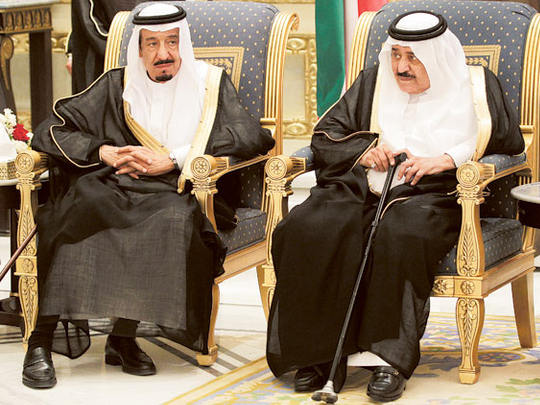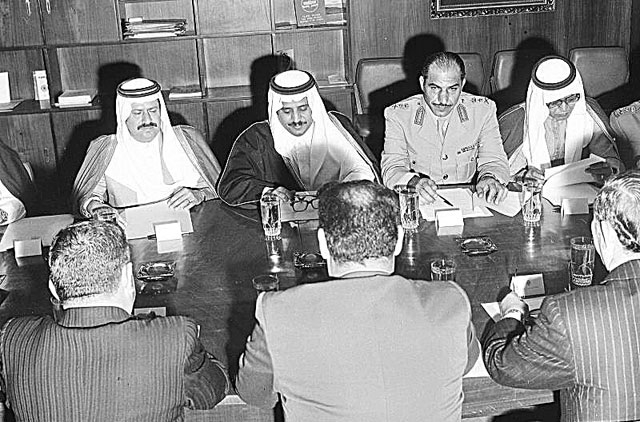
Riyadh: To outsiders, the Al Saud ruling family’s succession process often appears opaque. But the senior princes have long planned the next step in power transfer.
Saudi Arabia’s Defence Minister Prince Salman Bin Abdul Aziz is widely seen as the next most senior prince in the world’s top oil exporter after the death of Crown Prince Nayef, which was reported on Saturday, just eight months after he had become the heir himself.
Unlike in European monarchies, the line of royal succession in Saudi Arabia does not move directly from father to eldest son, but is passed down a line of brothers born to the kingdom’s founder King Abdul Aziz Bin Saud, who died in 1953.
So far, five brothers have become kings and around 20 are still alive.
But only a few of those are thought to be realistic candidates to rule the country. Some have already been passed over or renounced their claims to rule.
“The inner circle of the Al Saud (family) can and do exclude from succession those found lacking in lineage, leadership and personal character,” said an American embassy assessment of the succession process as detailed in a 1995 diplomatic cable released by WikiLeaks.
Under rules drawn up soon after Abdullah, the current monarch, became king in 2005, succession decisions lie with an “allegiance council” of the ruling Al Saud family.
When a king dies, his crown prince accedes to power and nominates a new crown prince.
The allegiance council, which has 34 princely members who each represent the family of a son of Bin Saud, votes to approve the king’s choice and has the power to elect its own nominee.
The council swore allegiance to Nayef as crown prince after the death of his predecessor Prince Sultan last year, but it was unclear if it actually voted.
While the next stage of the power planning transfer process appears straightforward and uncontroversial, there will be keen interest in how the council handles more complex succession decisions in the future.
Front runners
The council has the power to remove a king or crown prince who is too sick to rule.
The next prince presumed to be in line for power is Prince Salman, who was made defence minister in November after Sultan’s death, cementing his role near the top of the family hierarchy.
He served for five decades as governor of Riyadh province, a role that made him responsible for settling disputes between other members of the ruling family.
An owner of several major media outlets that have pushed a pro-government position and supported King Abdullah’s cautious reforms, he said in 2007 that social change in the kingdom had to be slow and that the country was not ready for democracy, according to a US embassy cable released by WikiLeaks.
To many analysts, the key question is what will happen when the succession moves beyond the sons of Bin Saud to one of his grandsons.
That decision might not be made for some years, but outside observers already see the emergence of a handful of contenders who appear better qualified to rule than their cousins.
There are no formal rules to dictate how the generational transition will be made other than through Abdullah’s allegiance council. But any candidate would need broad support among the family as well as a strong record of political experience.
Salman’s son Sultan is the tourism minister and was the first Arab astronaut.
Another potential candidate among the third generation is Prince Khaled Al Faisal, son of the former King Faisal and the well regarded governor of Makkah Province, one of the most prestigious jobs in the country.












